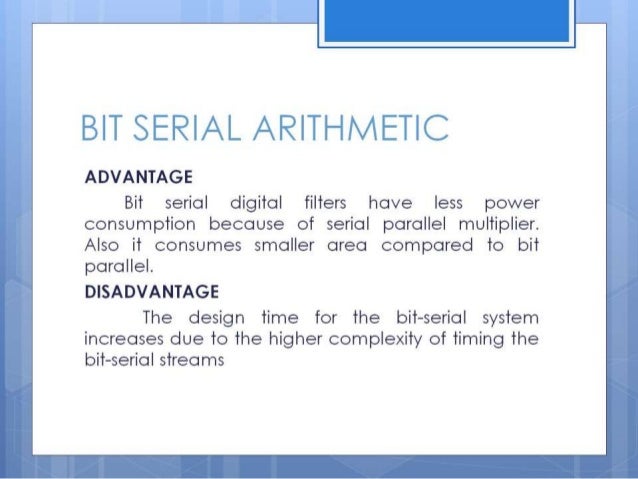[This is part of a series of expository, rather than anecdotal, notes, but it provides background for my discussion of the. Skip it if you're interested only in my stories.] With the 'embarrassing parallelism' of today's microcircuits, where the challenge is to keep many of the millions of available transistors busy at the same time, it is easy to forget just how little hardware is needed to mechanize binary arithmetic, performed serially.  [1] The basic algorithms are closely akin to those for multi-digit arithmetic that I was taught in elementary school. (For brevity, I will abbreviate 'as in grade school arithmetic' to 'AIGSA'.) However, the algorithms are much simpler for binary, because of the small size of the addition and multiplication tables (0 times 0 is 0, 0 times 1 is 0, 1 times 0 is 0, 1 times 1 is 1) and their ease of translation into binary logic ( x times y, is just x and y). Today's computers almost universally represent negative numbers in 'two's-complement' form (the result of subtracting the number's magnitude from zero and ignoring the underflow). But in the 50s and 60s other binary representations were common, notably sign-magnitude and one's-complement.
[1] The basic algorithms are closely akin to those for multi-digit arithmetic that I was taught in elementary school. (For brevity, I will abbreviate 'as in grade school arithmetic' to 'AIGSA'.) However, the algorithms are much simpler for binary, because of the small size of the addition and multiplication tables (0 times 0 is 0, 0 times 1 is 0, 1 times 0 is 0, 1 times 1 is 1) and their ease of translation into binary logic ( x times y, is just x and y). Today's computers almost universally represent negative numbers in 'two's-complement' form (the result of subtracting the number's magnitude from zero and ignoring the underflow). But in the 50s and 60s other binary representations were common, notably sign-magnitude and one's-complement.
BIT-SERIAL ARITHMETIC Bit-Serial Addition and Subtraction X = x 0 ∑ x 1 x 2 x Wd –1 Y = y 0 ∑ y 1 y 2 y Wd –1 MSB LSB LSB first is commonly used The MSB first case is more difficult, but it is sometimes used D D X Y DC Reset Set X Sum DiffY D C FA DSP Integrated Circuits Department of Electrical Engineering larsw@isy.liu.se. Bit Serial Arithmetic. ECEn 621 Computer Arithmetic. Digit Serial Arithmetic. ○ Consumes one digit of each operand per.


The G-15 used two's-complement for addition and subtraction, and sign-magnitude for multiplication and division. It was the responsibility of the programmer to keep track of which form a value was in. The sign-magnitude form was commonly used for I/O and storage in main memory. Fortunately, bit-at-a-time conversion between the two forms is easy working right-to-left (least significant bit first) and requires only two extra bits of memory (flip-flops): • If the sign is positive, pass all the bits unchanged.
• If the sign is negative, pass all bits up to and including the first 1 bit unchanged; thereafter, complement each bit--replacing 0 by 1 and 1 by 0. [2] The two's complement operation is also self-inverse--the complement of the complement of x is x. The G-15 processed all numbers right-to-left (least significant bit first). [3] However, the sign bit preceded all the other bits, to enable complementation on the fly when needed. The Binary Point, Scaling, and Shifting Fixed point arithmetic is not restricted to integers. Many pocket calculators, for example, allow the user to choose the number of digits to display after the decimal point (typically two for 'dollars and cents' calculations). This is even more important for a machine without floating point arithmetic.
Fix exe errors. In the G-15, a value's 'binary point,' unlike its sign, had no explicit internal representation. It was up to the programmer to keep track of the binary points of all values throughout the course of a computation. Values were often treated as integers (binary point 0, i.e., immediately following the least significant digit) or fractions (binary point 28 or 57, i.e., immediately preceding the most significant digit), but this was entirely the programmer's choice. To align the binary points of scaled numbers (or to change their scaling for other reasons) it is necessary to shift them left or right--equivalent to doubling or halving them, respectively.